I’ve never liked having my picture taken, not even when I was a kid. The cognitive dissonance between the 70 percent-acceptable-person I see in the mirror, and the one frequently caught squinting like a constipated Popeye, is unnerving. Which version is the “real” me? Meaning, which version do other people see? But will they love me?
Recently, this insecurity was heightened when I needed to take an author photo for my forthcoming memoir, Open: An Uncensored Memoir of Love, Liberation, and Non-Monogamy. With the advent of Bookstagram and BookTok, I knew that the way an author looks has never held more weight, especially for women. Cis men, unsurprisingly, do not face the same level of pressure over their appearance. Nor do they enjoy the “opportunity” afforded by the somewhat-pervy interest in the “young(ish) woman author debut,” as if this is our debutante ball, and we have one shot to charm you with our wit and feminine wiles lest we be relegated to the pile of discount-aisle spinsters. But, for god sake, not in any overtly sexy way that makes other women (who are the majority of readers, after all) view us as rivals, or tacky. No, other women should want to be us—or at least be our friend.
If I felt this much pressure over taking my author photo as a 34-year-old thin cis white woman, what was it like for older women, people in the global majority, and/or those living and presenting outside gender norms? I was curious to hear about other authors’ experiences with their headshots, and put out a call for stories on Twitter. Below is the result; twelve writers, including yours truly, share the vulnerable and telling story behind their author photo.
–Rachel Krantz
*
Jenny Sadre-Orafai, Author of Malak
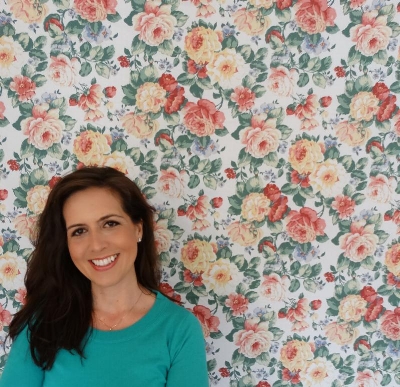 Image Credit: Laura Vela
Image Credit: Laura Vela
When I sent a photo that I had taken, the person I was in contact with said that they liked that I was in the process of starting to smile, but that the photo probably wouldn’t work… I went to the publisher’s website and quickly realized that every single woman was smiling in their author photos. The men were not. A couple of weeks later the same person told me that the publisher said the photo just would not work. They needed something “better” and that said something “positive” about me. The incredibly brilliant Chicana artist Laura Vela took the author photo that I sent the publisher—I’m smiling in it. All these years later, I’m disappointed in myself for not standing my ground and standing up for myself. I’m disappointed that I couldn’t say that I wanted a photo that was authentic.
*
Destiny O. Birdsong, Author of Nobody’s Magic
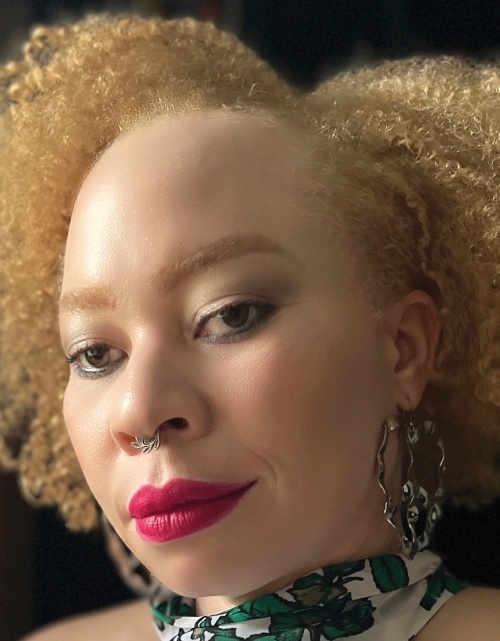 Image Credit: Destiny O. Birdsong
Image Credit: Destiny O. Birdsong
I’ve always suspected that authors who are considered beautiful are better received by readers, and as a Black woman with albinism I know I’m working against societal concepts of beauty that just barely include Black women and hardly ever include me. It doesn’t mean I’m ashamed to show my face, but it does mean I often wonder how it influences potential readers. The other problem is that many photographers have no idea how to photograph people with albinism.
My last experience with one came out terribly; it felt like he figured there was nothing he could do to make me look… human… so he just picked the strangest looking shots and turned them in. There’s a fetishistic way that that happens sometimes: people will see my difference and that’s all they see.
So I decided I’d try. And I think that was a good move because my forthcoming novel, Nobody’s Magic, is about women with albinism discovering themselves and their own beauty. And it’s told in their voices; they get to control the narratives of that discovery. And that’s what my most recent author photo does. It’s beautiful because it sits at the intersection of aesthetics and how I see myself. And I love that I got to mirror the work I’ve done on the page in the making of that photo: taking many shots, choosing one, then fine tuning it to make it the best it could be. It feels like a flex against the norm, like I’m thumbing my nose at whoever thinks my beauty isn’t possible. It’s me saying, “Oh, you don’t see it? Let me show you.” That happens in the book, and it happens in the photo. That’s why I’m smirking.
*
Alex McElroy, Author of The Atmospherians
 Image Credit: Grace Rivera
Image Credit: Grace Rivera
I have a conflicted relationship with my author photo. As a photo, I think it’s incredible. The artist did a wonderful job, and a close friend helped direct the shoot—she was the one who made sure my manicure was visible in the photo. However, the pictures were taken before I felt comfortable publicly presenting as femme. A lot has changed since then. I am now much more confident presenting femme, and my author photo seems like a relic of my past self, before I acquired that confidence. So the picture seems both true to who I was—a snapshot of a certain point on my gender evolution—while also being untrue to who I am now.
*
Malia Márquez, Author of This Fierce Blood
 Image credit: Lila Gaffney
Image credit: Lila Gaffney
The author photo is at work on the front lines of marketing. Hitting the right note is challenging, especially when you’re selling a book that doesn’t fit neatly into a genre. My mother is one of those “you should have smiled in the photo” people. While I don’t subscribe to this view, I knew that from a marketing perspective I couldn’t just give in to my Capricorn rising tendencies and eschew popular opinion when choosing a photo, especially with my debut novel. (Controversial take: society likes womxn who look approachable).
The photo I ended up using was taken out on a hike—my happy place. I do like it because it looks pretty natural, although I came down with a terrible migraine, fever, and chills later that evening, which explains the slight pallor. But I still lost sleep over it, wondering if I look too… something. Because one does ultimately have to choose a certain “look” and one angle on a person can’t possibly sum up the entirety of their being or their work.
*
Qian Julie Wang, Author of Beautiful Country
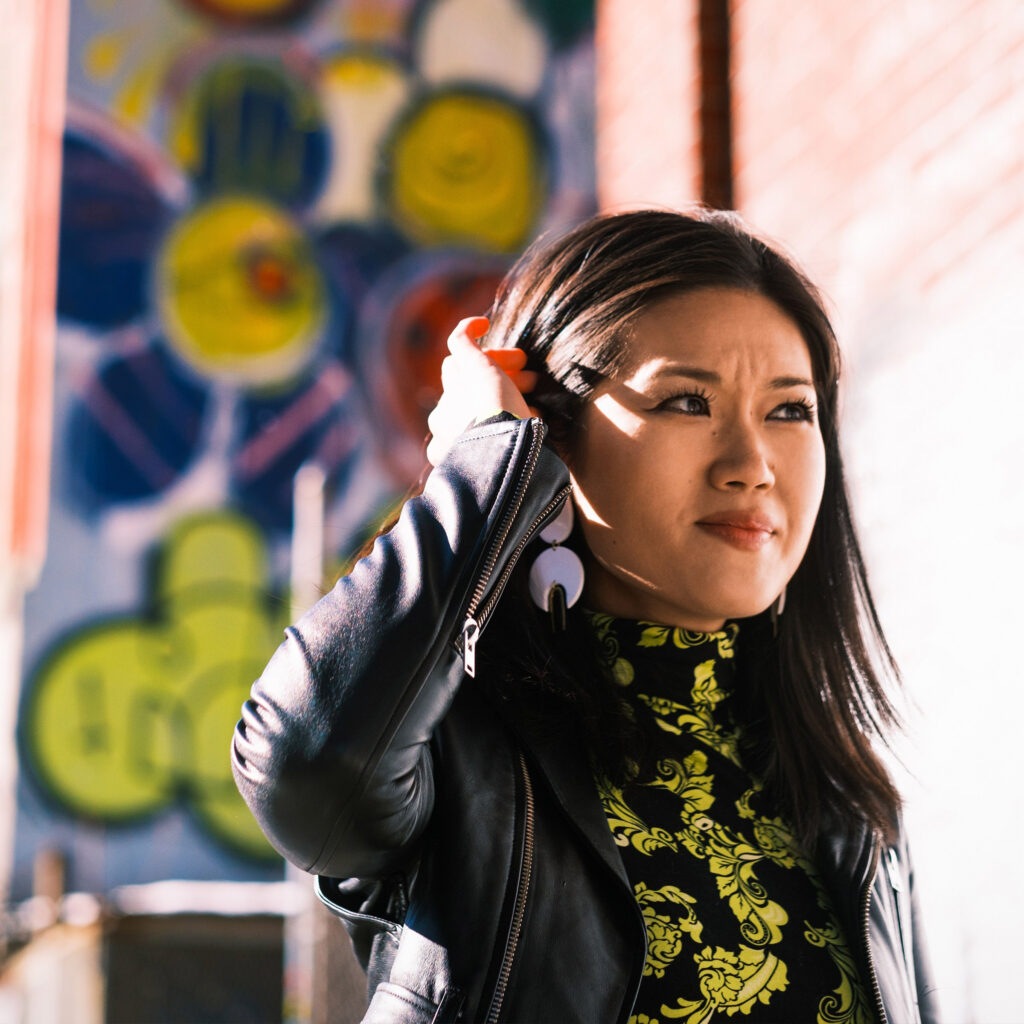 Image Credit: Ryan Muir
Image Credit: Ryan Muir
Having my author photo taken recalled to me the tightrope that women litigators (and particularly Asian women litigators) have to navigate: assertive without being “too aggressive” (and thus unappealing); attractive enough to be likable but not so attractive as to draw even more harassment; and demanding respect and deference without being “threatening” and “intimidating.”
…Going into the author photos, I caught myself wondering whether I could stave off some of it by looking less approachable, less easy-to-attack, less womanly and Asian. Of course, I realized that my race and gender was going to follow me no matter what I did, and I was just as likely to suffer the brunt of not looking womanly or “soft” enough. But if the problem prevailed across industries, I thought, perhaps my response might likewise be effective across industries.
Every time public harassment happened once again, I learned that much more that no matter how bad it got and how persistent it was, it would never keep me from continuing my work. So I figured that with the photo, I should simply forget the judgments of the viewer—I was never going to win, anyway—and maybe even ignore the very presence of the camera. Instead, I would do what I do the minute I enter any courtroom: light that tightrope on fire and go about my work with full focus, directed only by my professional acumen and well-honed intuition.
In the end, this seemed to work. All of my best photos were candids in which I wasn’t looking at the camera or really even aware of it; where I steeped in the thought of my next book, focused on what I could do instead of how acceptable I might come off. Has it prevented public harassment? Not in the least. But I can look at my photos, like my book and my legal work, and know that I let nothing come between me and the work I was born to do.
*
Rachel Krantz, Author of Open: An Uncensored Memoir of Love, Liberation, and Non-Monogamy
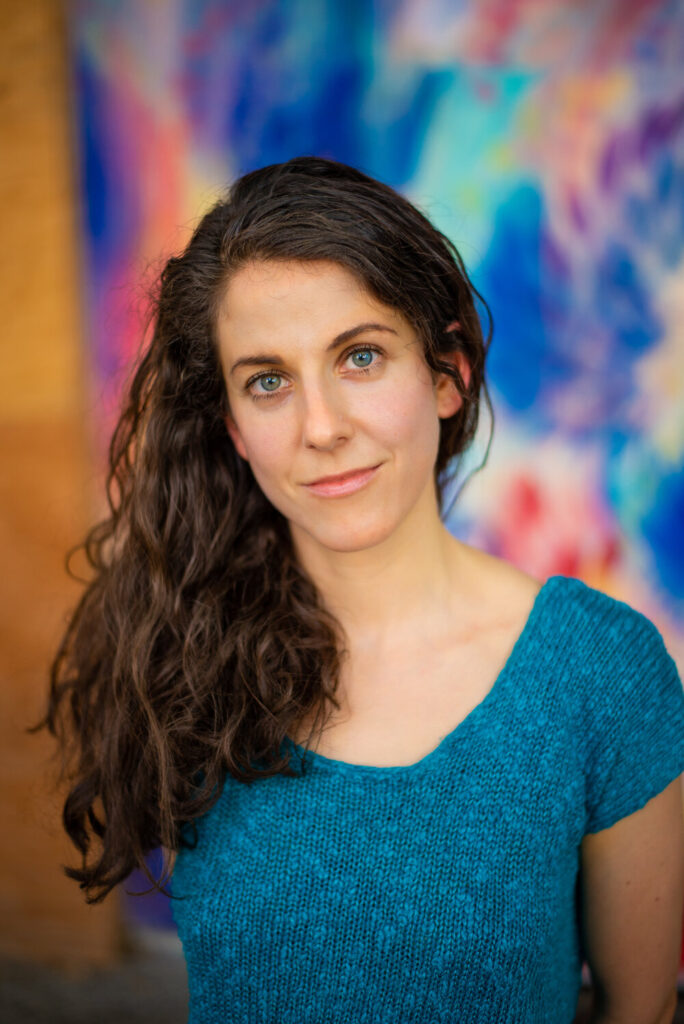 Image: Malika Danae Photography
Image: Malika Danae Photography
My debut memoir Open is about many things, but it’s being marketed as mainly about non-monogamy—a topic that already puts many people on the defensive/assumptive. I feel the pressure to look appealing enough to entice the reader into a curiosity about me, but not so appealing that I look like the polyamorous bisexual slut (I arguably am) who’s trying to steal your partner (I’m not, unless you’re into that).
The author photo perfectly encapsulated and amplified societal pressures I’ve felt since I hit puberty. I must be smart-yet-sexy, approachable-but-not-ditsy, hot-but-not-hot-in-the-wrong-annoying-tacky-way, wise-yet-unwrinkled-and-exuding-unsnobby-gravitas, etc. And the stakes of tripping on that rigged highwire are higher than ever.
Long story short, the first two attempts with different white male photographers were unsuccessful in one way or another. So for the third try, I decided to eschew the male gaze, however well-intentioned. I found a young Black woman in Sacramento who was genuinely excited by the opportunity to have her name on a book in multiple countries, and was trying to grow her business (hire Malika Danae Photography if you’re ever around Sacramento!). And wouldn’t you know it, when we shot the photos outside, she did the job fifty times as well in half the time. I felt comfortable and sexy the whole way through. When the shots came through, I actually loved so many of the photos that I couldn’t choose. “Wait, how are these so much better than the other attempts?” one friend asked. I told her that in these photos, I was actually comfortable.
*
Jennifer Savran Kelly, Author of Endpapers
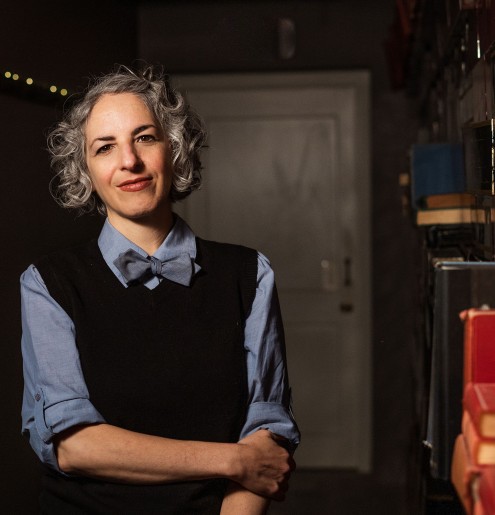 Image Credit: Darcy Rose
Image Credit: Darcy Rose
My forthcoming debut novel Endpapers explores what it means to live authentically as a genderqueer person—how to remain true to oneself when gender is fluid, how to distinguish, for example, when you’re dressing to meet whatever expectations a particular context seems to dictate instead of dressing to express who you are that day. When I was growing up in the 1980s and 90s, there were fewer words to describe gender, and I never found the ones to either explain or understand myself—a female who loved androgyny, hairy legs, and lipstick. It wasn’t until middle age, through writing this book, that I found the language to comprehend my gender. Even still, however, I struggle with labels, hoping each time I learn a new one that it will finally be the one that fits.
So when the time came to provide an author photo, I fretted over what gender to perform, what my readers would expect to see based on the content of my novel. After too much anxiety, I realized I was doing the very thing my main character struggles with. So I needed to stop the noise and determine what would feel true to me—a genderqueer woman who still loves bow ties and lipstick. Ultimately, it was an empowering and humbling experience.
*
Jen Winston, Author of Greedy: Notes From a Bisexual Who Wants Too Much
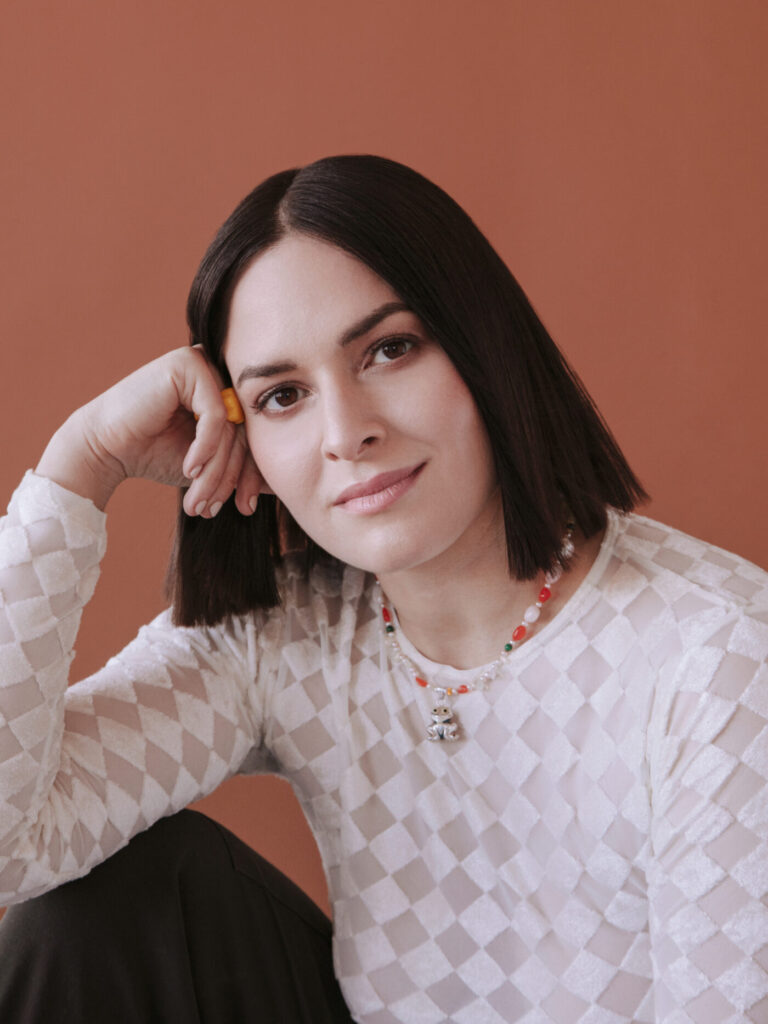 Image Credit: Landon Speers
Image Credit: Landon Speers
I think the author photo feels especially daunting for female memoir writers. You can’t look too “hot,” or else your readers will hate you. You can’t look like you’re trying too hard, or else the prose itself becomes desperate. I spent about $3,000 on the whole ordeal, but I don’t regret it. I’d gained weight over the pandemic, and it was the first time I felt really beautiful the entire year. I felt like a queen for the day. I’m going to do it every few years now just for my self-esteem. But still, it’s impossible to strike the right balance. You somehow have to display that you reject patriarchal beauty standards without rejecting them too much. Like literally everything else we do, it’s a terrible, complicated dance.
*
Amy Clark, Author of Palais Royale
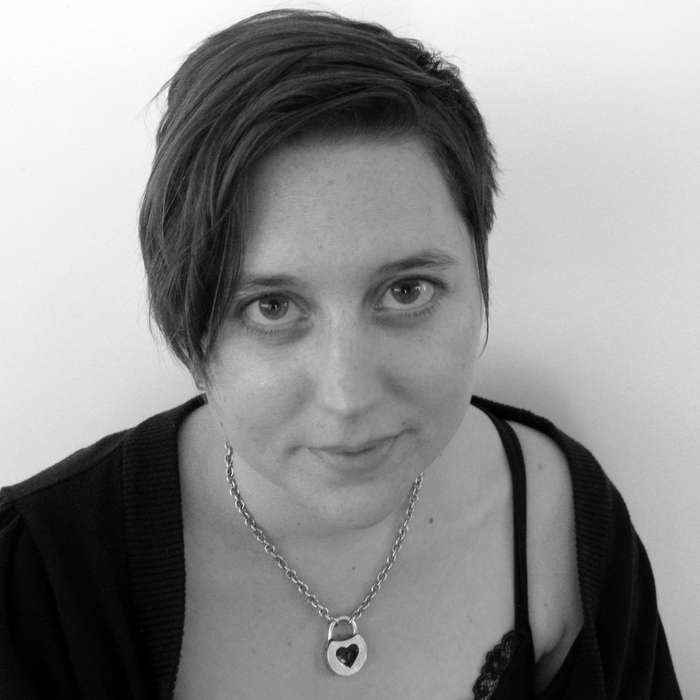 Image Credit: Jeremy P. Bushnell
Image Credit: Jeremy P. Bushnell
I have different photos I think of author photos—one on my website amylclark.com, one on my blog, and one on my book, Palais Royale. I’m not happy with any of them. When Palais Royale was scheduled to go to press, the publisher asked me for an author photo. The one I chose is more than ten years old. I didn’t choose an older photo of myself out of vanity; I don’t think I looked better then than I do now. In fact, though I have always photographed poorly, in real life I like the way I look now much more than the way I looked when I was in my late twenties. I chose that picture because it looks more like the person who wrote Palais Royale.
This was the first novel I ever wrote, and twelve years elapsed between the time I finished and the day it was published. I’m glad it’s out in the world, and I’m proud of the work, but a lot has happened to me in twelve years, and I am a completely different person than the one who wrote that book. That’s why I chose this author photo from all that time ago, taken by my ex. It’s also why I used “she/her” pronouns in my bio in that book. I’ll never be “she/her” again, but I was while I was writing that novel, and I want to honor the person I was even as I celebrate the person I’ve become.
*
Courtney Maum, Author of Before and After the Book Deal: A Writer’s Guide to Finishing, Publishing, Promoting and Surviving Your First Book
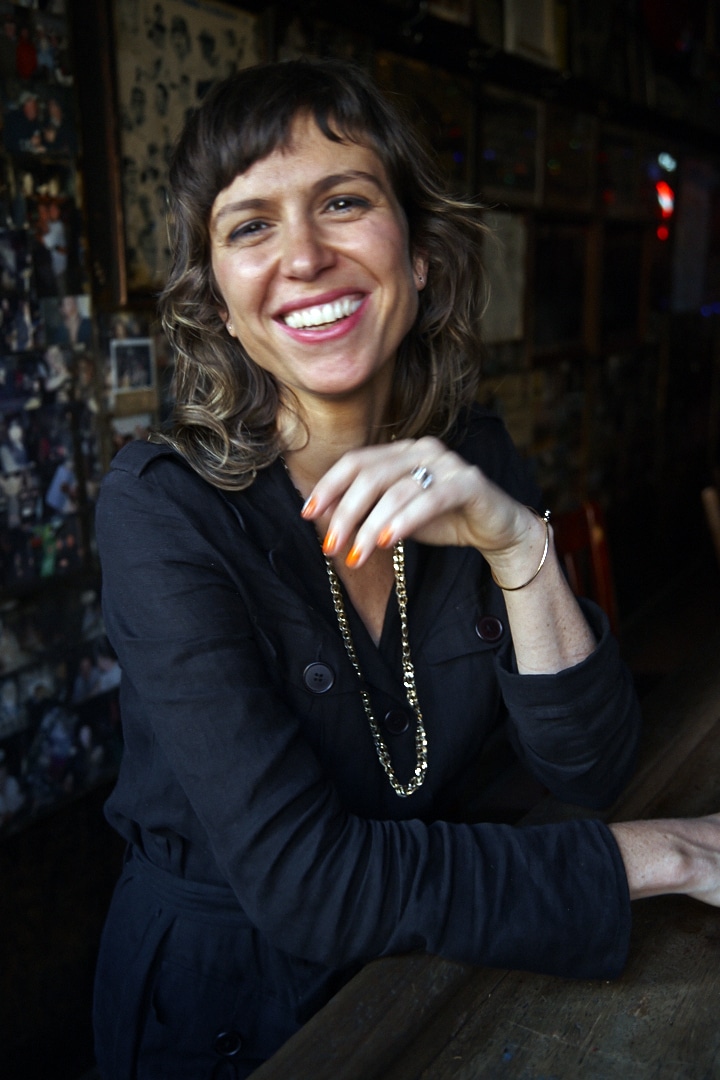 Image Credit: Colin Lane
Image Credit: Colin Lane
I think there is a lot of pressure on women writers to look “approachable” in their debut author headshots. What this means is that they need to look capable of intelligence, without looking smarter than the person staring at the book jacket, and they need to look presentable, but not too attractive, because you don’t want to intimidate anyone (male readers, especially!) with your wild woman looks. In fact, I’m not entirely sure that women authors are allowed to have breasts until their third or fourth book. But I think this nonsense is changing.
I remember feeling so proud of the author Melissa Broder because in the headshot for her latest novel, she bucked the rules and pubbed with an ultra feminine, fiery hot pic. Catherine Lacey is another example—her over-the-shoulder debut author photo is iconic, and to me it was inspirational. I remember seeing that and thinking, hot damn, she’s not holding anything back!
*
Lincoln Michel, Author of The Body Scout
 Image Credit: Adalena Kavanagh
Image Credit: Adalena Kavanagh
When I was a young aspiring writer, I remember being confused by authors who used the same photo for years and years or even decades. I wouldn’t be like that, I told myself. I’d do something weird and different each book! (For some reason, I was stuck on the idea of posing with a giant chrysanthemum in my mouth obscuring most of my face.)
Then when I was finishing my novel The Body Scout, I realized I’d been using the same photo myself for over a decade. I’d become the authors I’d side-eyed. Turns out, author photos are mostly a lot of stress. You can’t look too serious or too whimsical, too animated or too wooden. And no one on earth seems to know what to do with their hands. Plus for most of us they have to be multifunctional. A photo you will use not just on your book jacket but on promo articles, book festival brochure, university faculty pages, etc.
Luckily, my friend Adalena Kavanagh is a fantastic photographer and was willing to take my photo. While we tried a few odder ones, I ended up using one of the more straightforward photos. Maybe in another decade when I force myself to do another author photo, I’ll get the chrysanthemum involved.
*
Colleen Hubbard, Author of Housebreaking
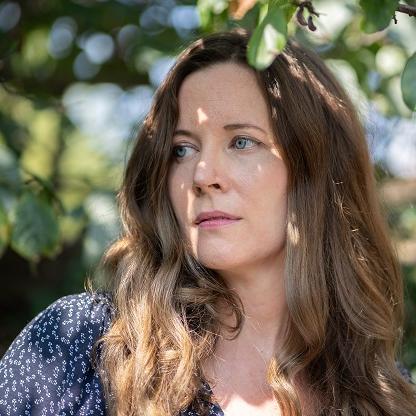 Image: Amaal Said
Image: Amaal Said
I dreaded having my author photo taken. Within the previous year, we’d had our daughter, and then went into lockdown a handful of months later, all the while I was writing my debut novel, Housebreaking. On top of this, we were living in the UK, away from my close-knit group of friends. When the book sold, I was just coming out of a serious depression, and I didn’t like the idea of that moment being crystallized forever.
It’s hard to pin down exactly what made the photography session so magical, but if I could take a guess, it would be the photographer herself. I chose Amaal based on the recommendation of a writer friend. We spent the afternoon talking about women we both admired, like the writer/historian Emma Dabiri and the poet Ada Limón.
It was August, brutally hot, and in the shot that is used for my book cover, I am standing under an apple tree and had just swatted away a bee. We learned soon after that I was expecting our second baby. When I look at the photos now, I feel lucky to have a record of that moment: my daughter napping inside the house; my son still a secret to me; and the type of heat that feels impossible to remember in January.
____________________________________________________________
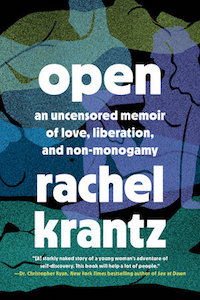
Rachel Krantz’s Open: An Uncensored Memoir of Love, Liberation, and Non-Monogamy is available now via Harmony.



